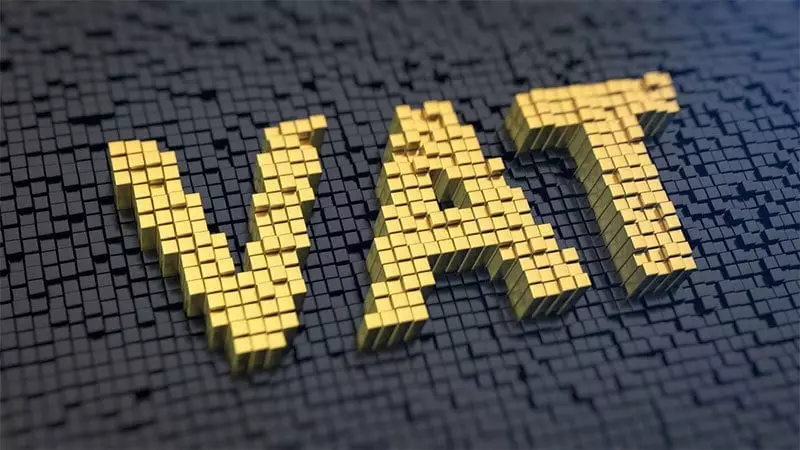VAT implications of charity supporter schemes
The previous article looked at the Gift Aid implications of ‘donor incentive schemes’ or ‘charity supporter schemes’. This article covers the VAT position of such schemes.
Supporters in these schemes are commonly referred to as friends, supporters, patrons or benefactors of the charity. Supporters are usually offered a package of benefits in return for agreeing to pay the charity a specified ‘minimum payment’. The schemes are usually structured for gift aid purposes as either:
- Under the threshold – the value of benefits provided does not exceed the gift aid donor benefit limits. The whole of the supporter’s minimum payment can be treated as a gift aid eligible donation
- Split payment – the supporter’s payment is split into a non-gift aidable fee for the benefits (the minimum payment) and an additional optional donation, which is gift aidable.
For VAT purposes, if a supporter must pay a minimum payment for a package of benefits, then that minimum payment is consideration for the benefits and within the scope of VAT. So:
Advertisement
- for an under the threshold scheme, the entire payment made by the supporter is within the scope of VAT, even though it is seen as a gift for gift aid purposes
- for a split payment scheme, only the fee element is subject to VAT, as HMRC accept that any optional donation above the minimum payment is outside the scope of VAT.
This can be a critical factor in deciding whether to structure a supporter scheme as under the threshold or split payment. From a tax perspective, taking into account both gift aid and VAT:
- if the benefits package is VAT standard-rated, it will usually be better to structure as a split payment scheme
- if the benefits package is VAT exempt or zero-rated, it will usually be better to structure as an under the threshold scheme
- if the benefits package is a mix of VAT exempt, zero-rated and standard-rated, it may or may not be better to structure as under the threshold, this will depend on the proportions that are zero- rated, exempt and standard-rated.
See the previous article on Gift Aid efficient donor incentive schemes for an illustration.
How to determine the VAT status of a supporter scheme

This is a step by step process, to be undertaken separately for each category of supporter.
Step (1) Consider each benefit as if it supplied in isolation and establish its VAT status on that basis
For example, if supporters are given a printed magazine, then that benefit is zero-rated, if you give supporters a free ticket to a pay entry event, the VAT status of that benefit follows that of the ticket.
Make a list of supporter benefits for each category of supporter and assess the VAT status of each benefit individually.
There are then two options for a category of supporter:
- All benefits have the same VAT status: If all of the benefits have the same VAT status, then it will probably be safe to assume the minimum payment has that VAT status
- Mixed benefits. If the benefits are a mix of different VAT statuses, go to step 2.
Step (2) Does ESC 3.35 apply?
In the past HMRC staff generally accepted that charity supporter schemes qualified for an HMRC extra statutory concession (ESC) referred to as ESC 3.35, under which a non-profit membership body is permitted to treat member subscriptions as apportioned for VAT purposes between the benefits provided.
For example, if a member receives a package of zero-rated and standard-rated benefits, under ESC 3.35 a charity can apportion the subscription between zero and standard-rated. The apportionment is usually done on a cost basis or a market value basis if reliable market values can be established.
HMRC’s policy on ESC3.35 changed (in approximately 2014) to being that charity supporter schemes do not qualify for this concession because charity supporters aren’t members of the charity in the relevant sense.
However HMRC does accept that if HMRC staff have previously agreed that a charity supporter scheme qualified for ESC 3.35, it can carry on relying on that agreement provided the circumstances have not changed.
So if you currently apportion supporter minimum payments and if HMRC has previously agreed to this, you can carry on doing so provided the circumstances haven’t changed. Otherwise go to step 3.
Note that the split between VATable fee and outside the scope of VAT donation under a split payment scheme does not rely on ESC 3.35. That VAT split is permitted by HMRC at VAT Notice 701/1 Charities, section 5.14.
Step (3) Apply the VAT package tests
These are case law derived tests (also called the single / multiple supply tests). Very broadly the package tests require you to apply several tests to see if there is a valid reason why the benefits should not be treated as supplied separately:
(a) Principal and ancillary: (the ‘CPP test’) Is there a single benefit (the ‘principal benefit’) that is the main reason the average supporter purchases the package, with the rest of the benefits ancillary to the principal benefit? Benefits are ancillary when the average supporter does not purchase the package for the ancillary benefits but for the principal benefit. The ancillary benefits merely enhance the average supporter’s enjoyment of the principal benefit.
(b) Artificial: (the ‘Levob test’) Would it be artificial to treat the benefits as supplied separately? This is usually the case where the benefits are interdependent, however it can also be the case where the benefits are not interdependent but are sufficiently closely linked to or merged with each other. The degree of linkage or merger required is a key issue for charity supporter schemes.
(c) Predominant benefit: Is there a single benefit that predominates over the rest? This is possibly a new package test (the ‘Mesto test’) introduced by a 2017 tax tribunal case (Metropolitan International Schools) though its status as a separate package test is as yet unclear.
If the answer to all these questions is no, then you can apportion the supporter payment, as under ESC 3.35 in Step (2) above. If the answer to any of the questions is yes, then the whole package has a single VAT status determined by the status of the principal benefit if test (a) is met, the predominant benefit if test (c) is met or the status of the merged supply if test (b) is met.
The Serpentine Trust case

This is currently the lead decision on the subject of the VAT status of charity supporter schemes. In this 2014 decision, the Tax Tribunal considered the VAT status of an under the threshold supporter scheme run by a charitable art gallery.
The scheme had several categories of supporter (patrons, benefactors etc.) and a sliding scale of benefits that included private views of exhibitions, early morning breakfasts with the Trust’s directors, exclusive events, guided tours, a monthly on-line magazine, and a priority booking service.
Individually the benefits were agreed to be a mix of VAT types so step 2 was engaged. The parties in the case (HMRC and the Trust) had agreed the tribunal did not have jurisdiction over HMRC extra statutory concessions and so the ESC 3.35 issue was not decided on. The next step was therefore to apply the VAT package tests (step 3).
The 2014 Serpentine Trust case was before the 2017 Metropolitan International Schools case so the judge did not specifically consider test (c). For test (a), the judge decided that no single principal benefit could be identified, however for test (b) she decided it was artificial to treat the benefits as supplied separately. This was because, even though the benefits were not interdependent, they were sufficiently merged. They were described collectively as ‘an opportunity to partake of exclusive events
at, and offers by, the gallery’.
The tax tribunal then went onto decide that as some of the principal benefits (i.e. benefits that weren’t ancillary to other benefits) were standard-rated, then the entire package was standard-rated.
This case has been seen as meaning that, unless you can rely on ESC 3.35, if you include standard- rated principal benefits in a benefits package, then that is likely to make the entire package standard-rated.
However this approach has possibly been called into question by a more recent decision of the tax tribunal.
The Harley Owners Group

This December 2017 decision involved members of a Harley Davidson motorcycle owners’ group (not a charity) who paid a subscription and in return received a package of motorcycle related benefits such as printed tour maps and guides, patches and pins for jackets, a leather wallet (a joining gift), invitations to exclusive events, access to membership of local chapters, third party discounts, free entry to the Harley Davison museum (in Milwaukee USA), special access to websites and many more.
As in Serpentine Trust, the judge decided that there wasn’t an identifiable principal or predominant benefit (tests a and c) however this time the judge decided it was not artificial to treat the benefits as supplied separately (test b).
This was because many of them were in fact supplied separately and individually the benefits provided were too significant in qualitative terms to allow the supply to be characterised as a single supply.
The future
There are clearly some parallels between the Harley Owners Group and Serpentine Trust cases, for example in both situations there was a fairly loosely associated package of benefits, in Serpentine’s case the association being an art gallery. In both cases some of the benefits could be and were purchased separately, though there were possibly more tailored benefits in the Serpentine case.
However, the Serpentine Trust is likely to be the closer parallel for most ordinary charity supporter schemes, and as such must be seen as the relevant VAT case law for charity supporter schemes in general. It is possible HMRC may appeal the Harley Davidson decision. If HMRC does appeal and lose on appeal, such a decision might have important implications for charity supporter schemes. So the Harley Davidson case will be one to watch.
It is also possible that HMRC might relax its position on ESC 3.35 to again permit charity supporter schemes to be apportioned for VAT. This would allow some charity supporter schemes, particularly those in the range £500 – £1,000, to take advantage of the forthcoming increases to the gift aid donor benefit limits, without being blocked from doing so by the adverse VAT consequences.
For the moment though it is best, if the scheme has a range of benefits but does not include full charity membership, to weigh up the cost of VAT against the gift aid earned by the charity in deciding whether to have a split scheme or not.
Helen Elliott is a partner at Sayer Vincent LLP which provides audit, tax and other advice to charities.



